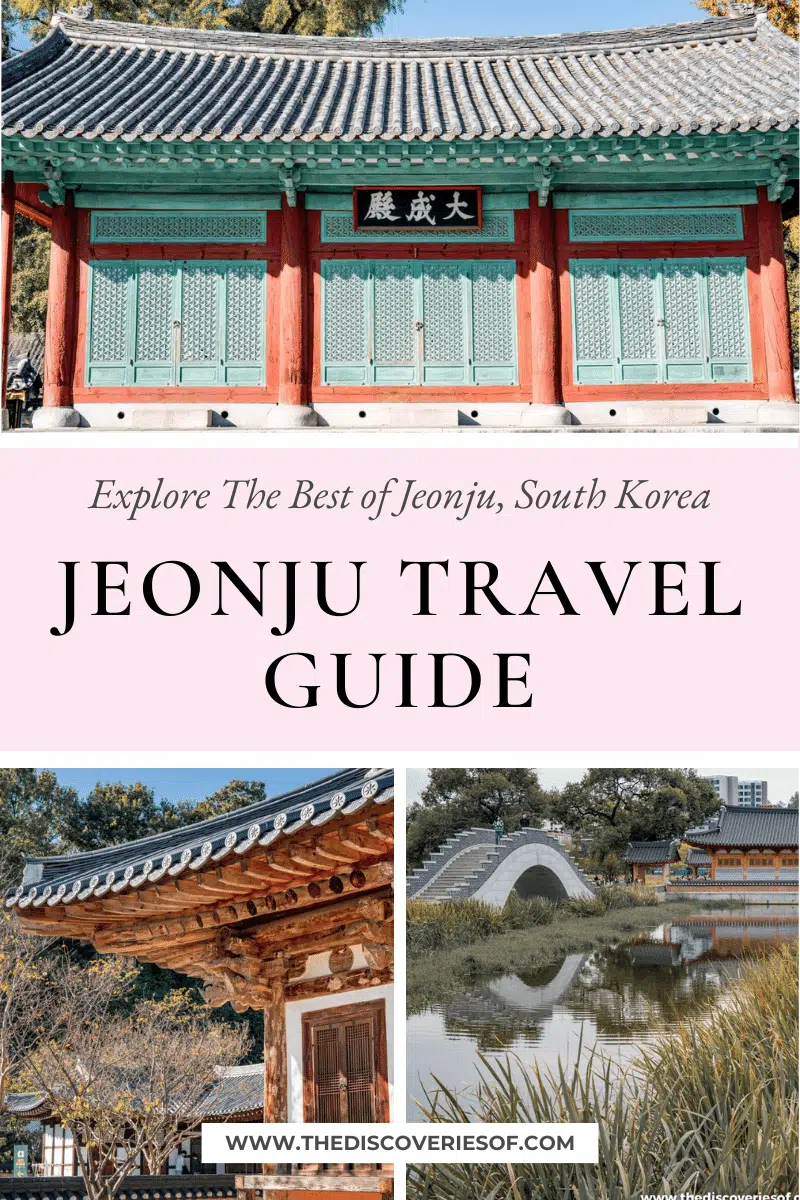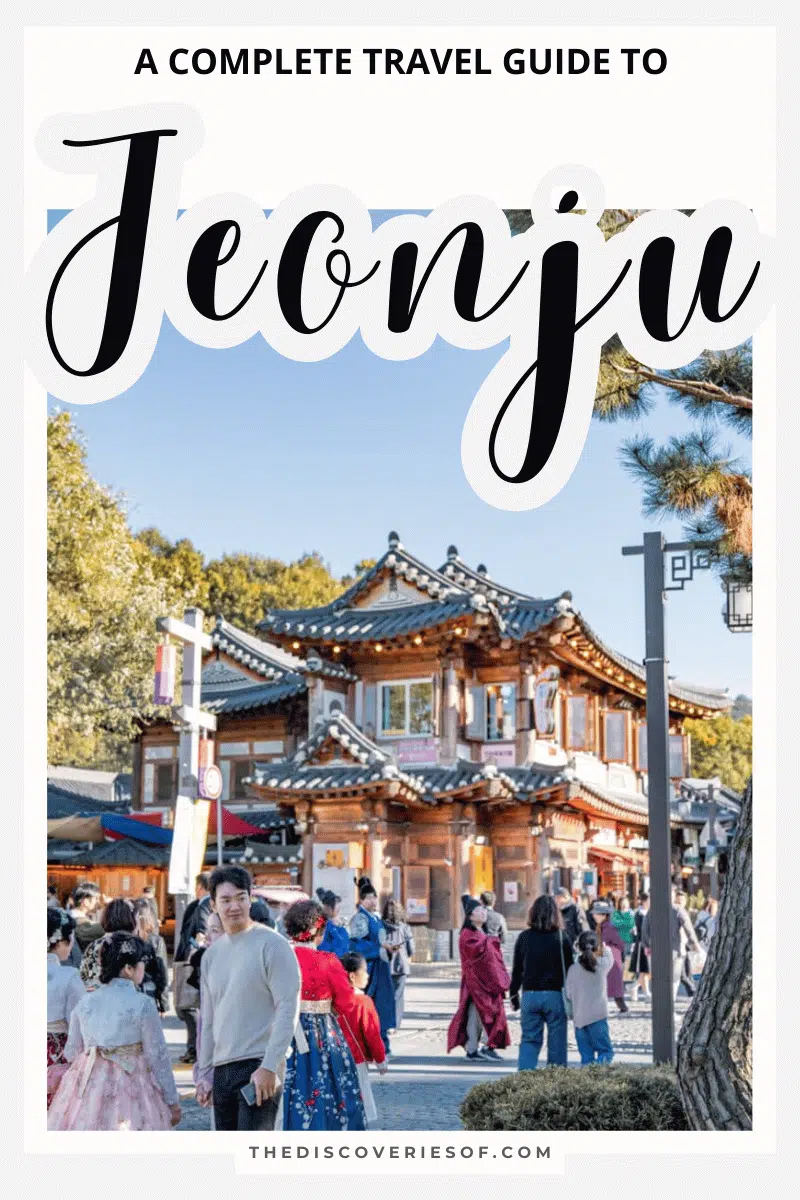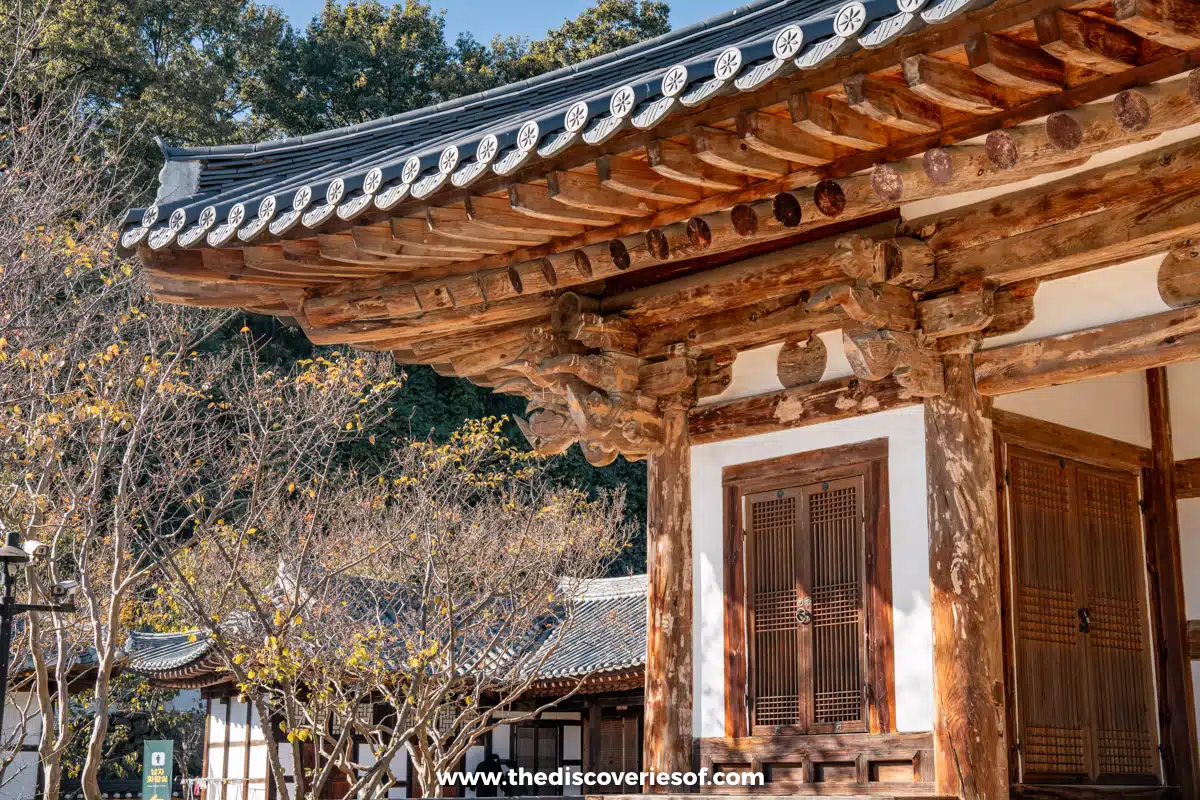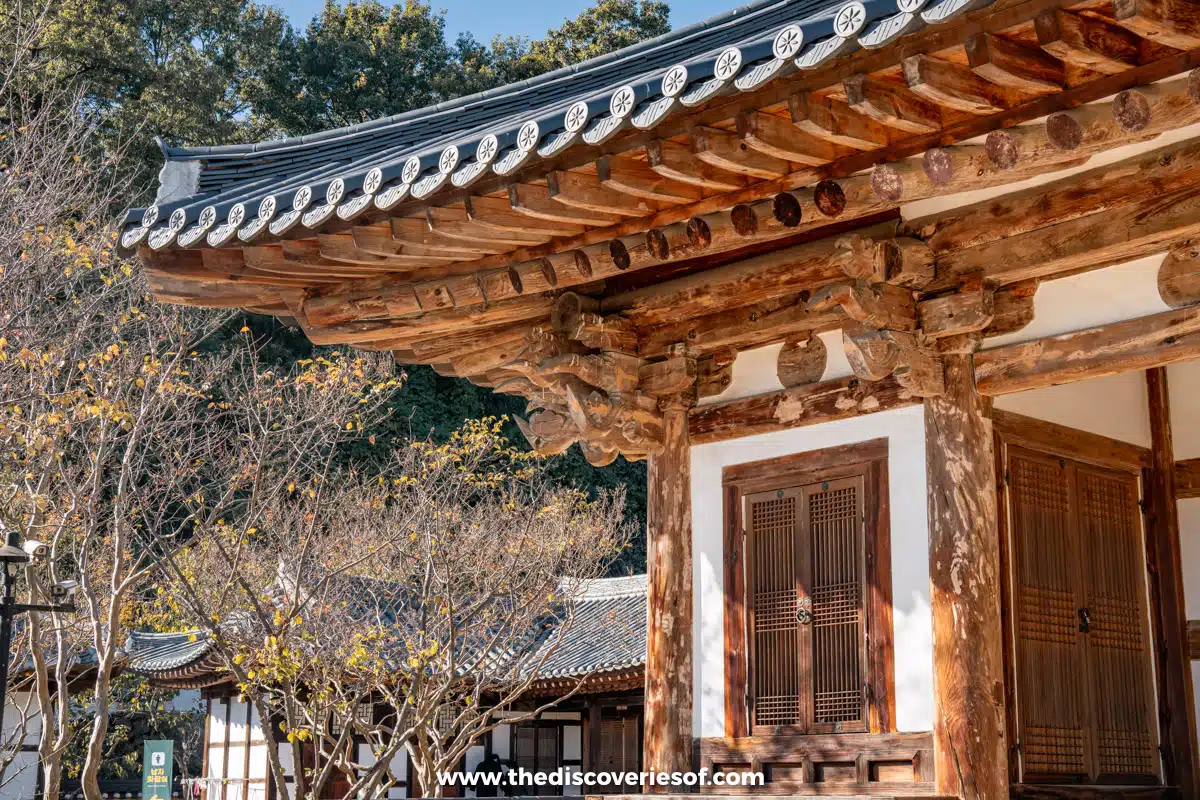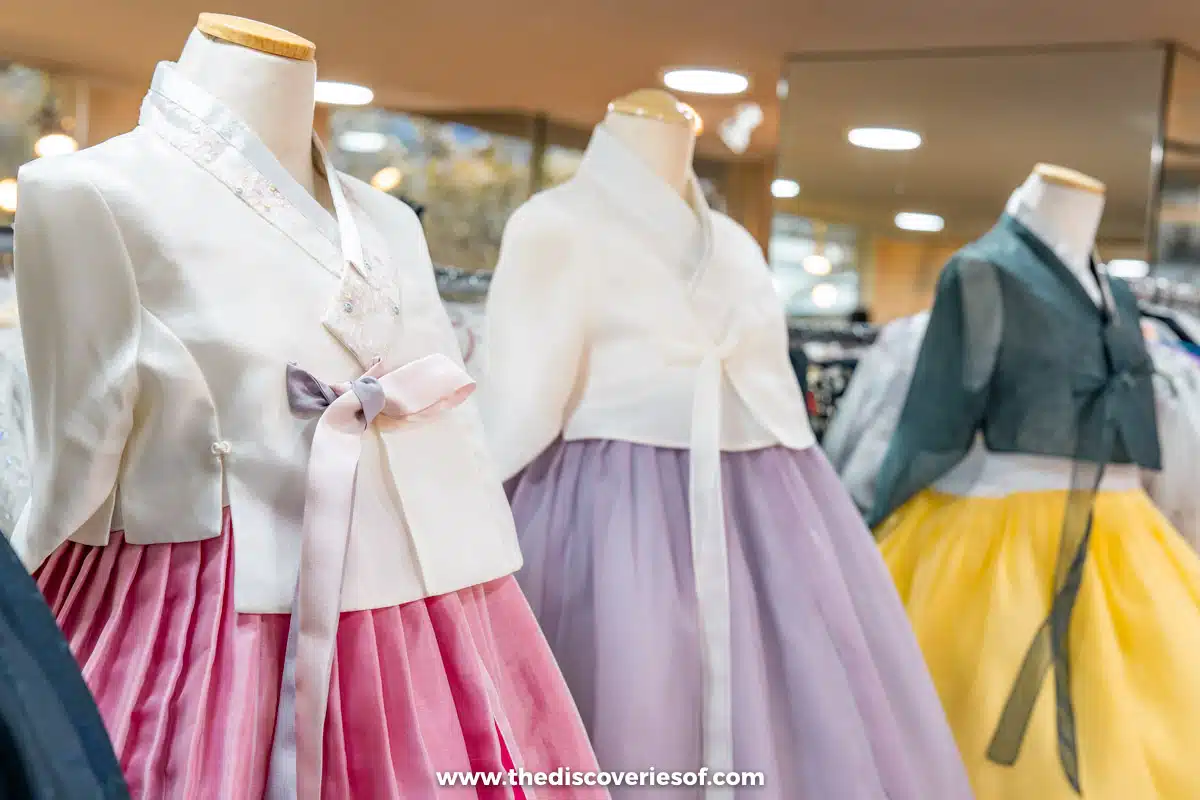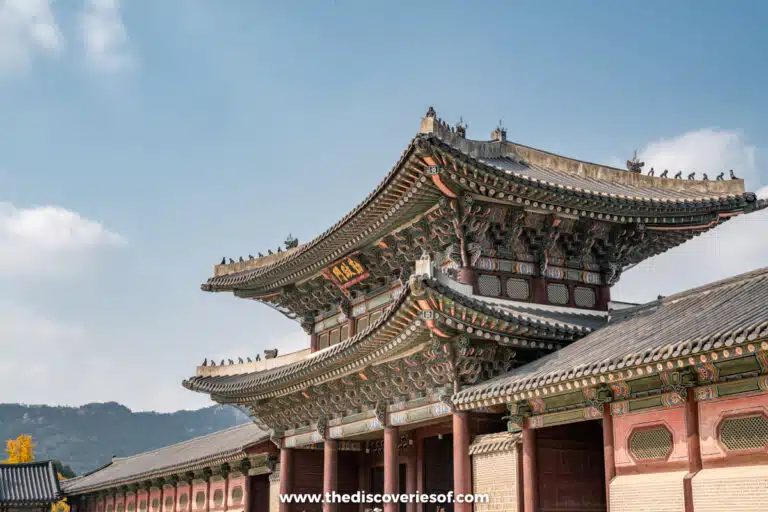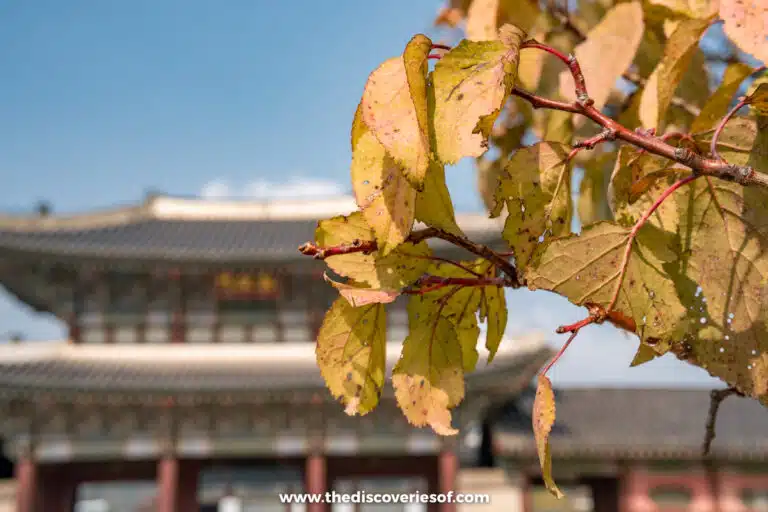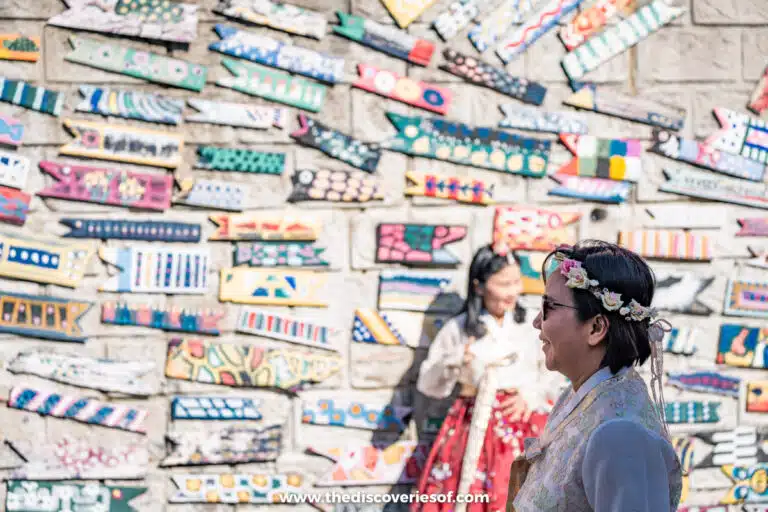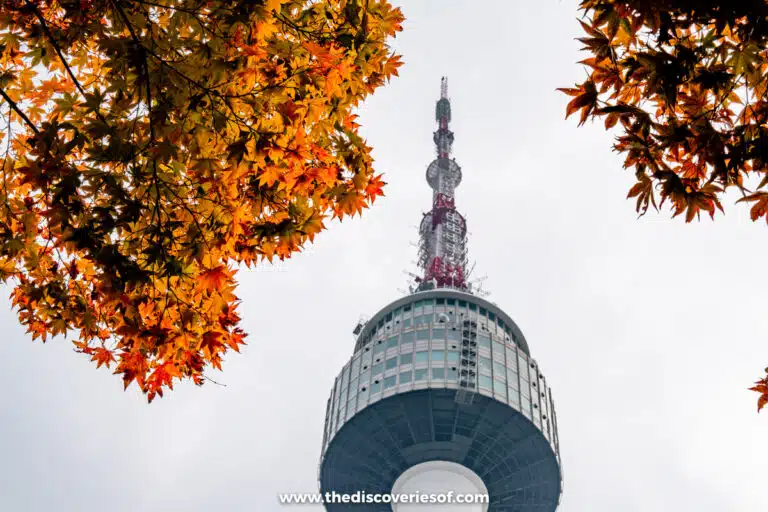Jeonju is a fascinating part of South Korea that leans into historical traditions and culinary prowess. Explore the best of Jeonju, South Korea, with this guide. Top things to do, eat and travel tips for your trip.
I just got back from a trip to South Korea and it was a whirlwind tour of the exciting East Asian country.
If you’re planning a trip to Seoul (or anywhere else in South Korea), I strongly suggest adding a trip to Jeonju. Most tourists know about the city’s famous Hanok Village but stop short of seeing other areas around town. Don’t make the same mistake.
The city is one of South Korea’s oldest, dating back to 57 BC. It’s also where Joseon Dynasty King Taejo’s family was from and the site of the battle of Jeonju (which Korea won).
It’s still a vibrant city today and home to delicious food, stunning architecture and centuries-old traditions.
Take your time and explore historical sites like Jeondong Catholic Cathedral, walk through Jeonju Hanok Village in traditional hanbok clothing, and try all the local food you can in this UNESCO City of Gastronomy.
Ready to discover everything that the charming town offers? Read my guide to the best things to do, where to eat, and how to plan a perfect trip when you visit Jeonju.
Things to Do in Jeonju
Explore the Famous Jeonju Hanok Village
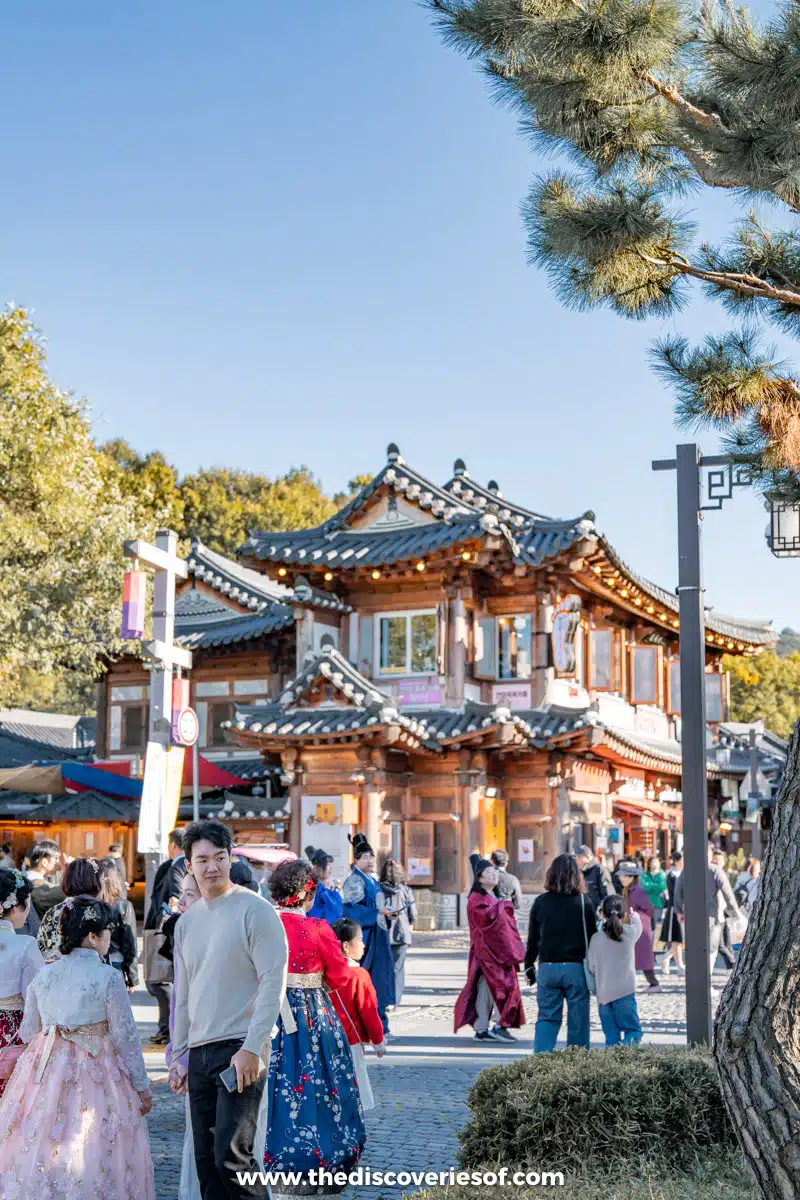
Jeonju’s Hanok Village is a perfect opportunity to see the famous hanok-style houses that showcase traditional Korean architecture and a longstanding sense of community.
You’ll quickly notice the sheer volume of homes. There are somewhere between 700 and 800 of them neatly lined up in rows along the cobbled streets. But look closely, and you’ll see unique design elements like the arching tile roofs (Giwa-jib) that characterise these homes.
Going inside the hanoks is equally fascinating. Take note of features like the exposed beam ceilings, his and hers living quarters separated by garden courtyards, and an Ondol heating method, which uses a heated stone to warm the floor so residents can sleep directly on it. Pretty innovative, right?
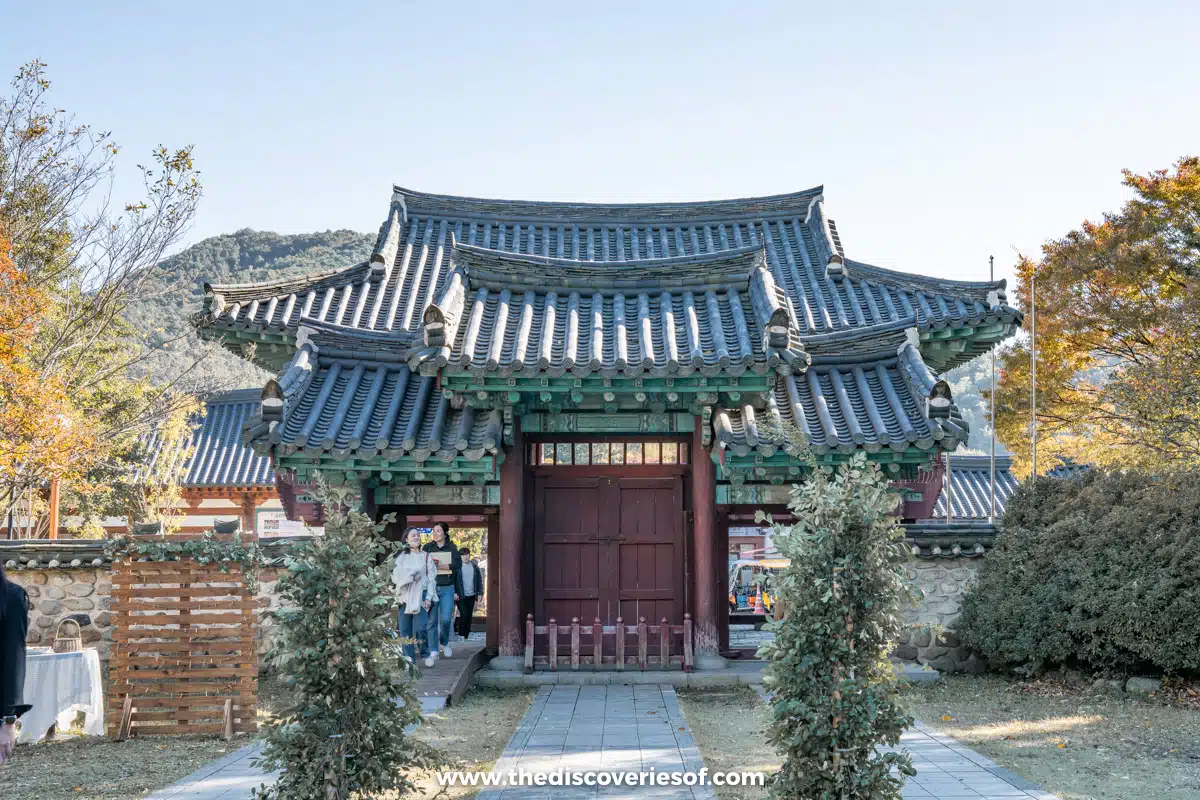
Most were built during the 20th-century Japanese rule as a way for residents to hold onto their Korean identity.
But the 500-year-old Gyeonggijeon Shrine is the focal point of the village and something you won’t want to overlook on your visit. Step inside, and you’ll find portraits spanning centuries, including King Tae-jo, the first royal Joseon Dynasty leader.
One of the most popular things to do is to dress up in a traditional Korean hanbok dress and stroll around the town, which is even more fun when you attend one of the many local festivals held here.
Top Tip
You can rent a hanbok dress at Hanboknam for around £6 ($8) per hour.
Make Moju With a Local Guide
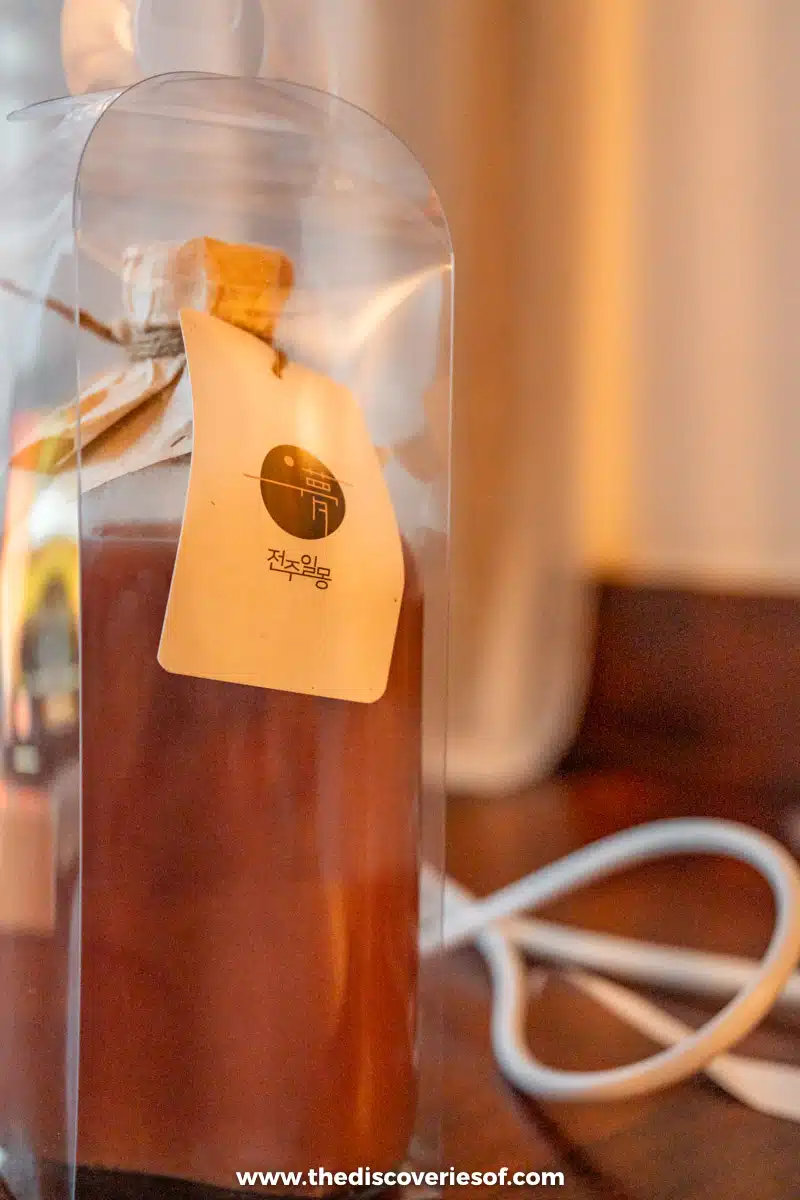
One thing I really enjoyed about visiting Jeonju was discovering more of the local food and drinks. The UNESCO City of Gastronomy is full of unique culinary experiences, and Moju was a pleasant surprise.
So what exactly is it? The low-alcohol tonic takes Makgeolli (a fermented rice wine) and ramps it up with spices, fruit, and other flavourful additions.
Want to have a hands-on experience on your trip to Jeonju? Take a class and make your own Moju with a trained professional. The friendly guide will help you select ingredients that suit your preferences before making your very own batch of Moju. It was actually pretty tasty – you got to choose from 3 different recipes and make the moju to suit.
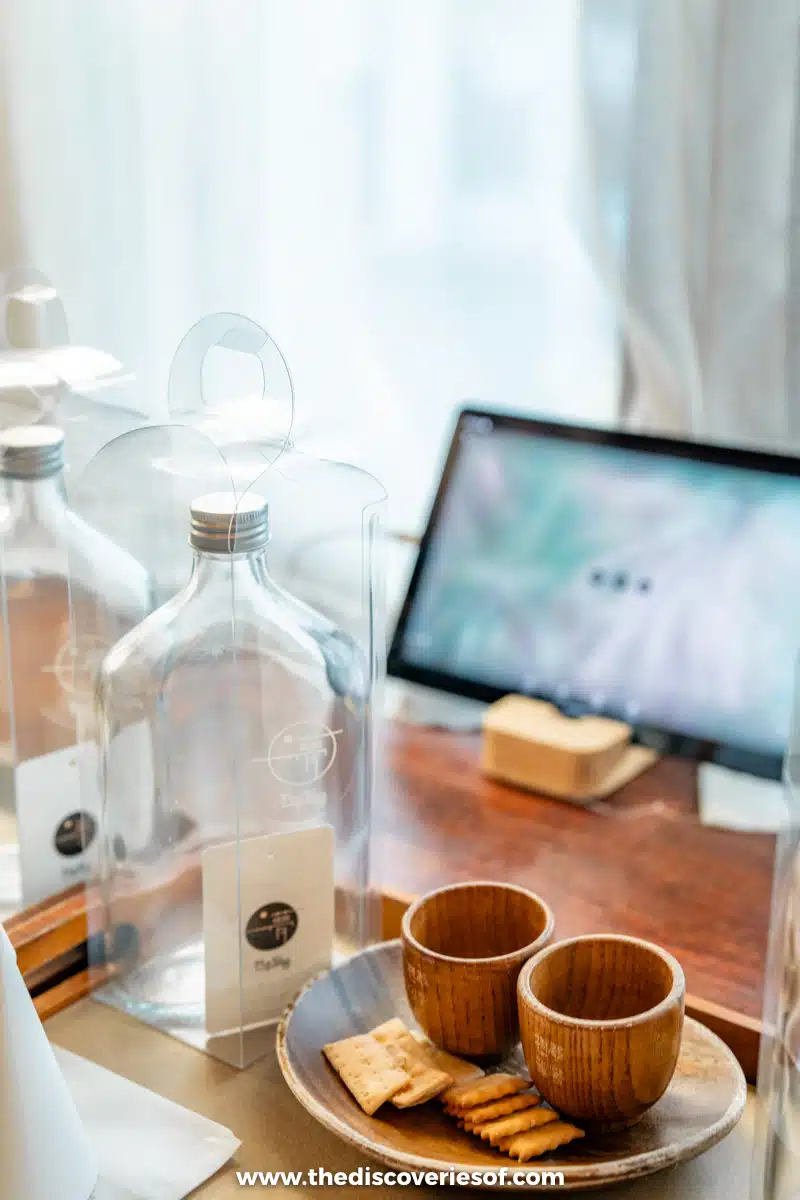
What’s really cool is that you can bring a bottle with you afterward, which makes a great gift or addition to your bar at home. It’s definitely a cool activity to try while you’re in town and a great way to meet other tourists and bond with a local while mixing up a traditional South Korean libation.
Visit Jeondong Catholic Cathedral
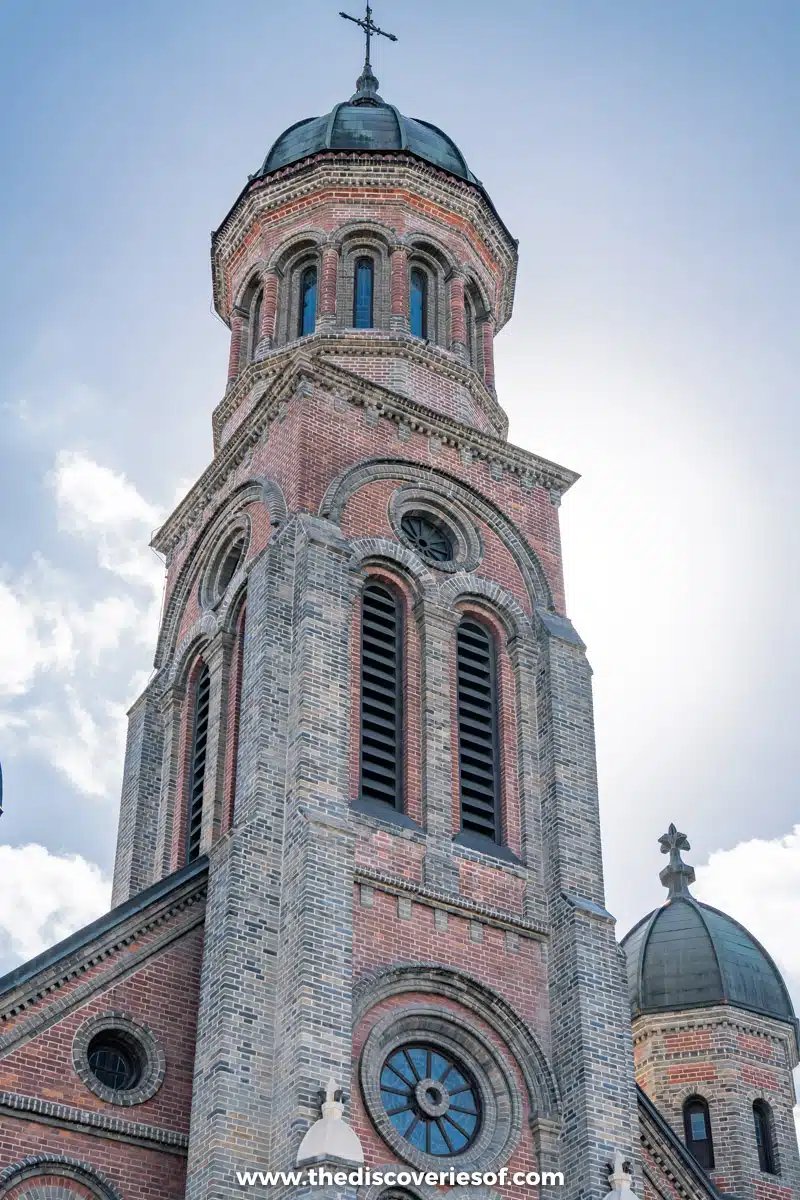
On the west side of the village near the Pungnammun Gate, you’ll find Jeondong Catholic Cathedral, a beautiful 20th-century church.
Inside and outside, you’ll notice unique Roman-Byzantine architecture and design, most notably the 3 bell towers in the front and the large dome ceiling indoors. Pay attention to the details of the building that Victor Louis Poisnel designed. If you’ve ever seen Myeongdong Cathedral in Seoul, you may notice similarities in style, as the architect also worked on the famous church in South Korea’s capital city.
The red brick exterior and granite floor inside are both stunning, and experts think that some elements of the facade were actually from the demolished fortress, which protected a walled city before the Japanese occupation
Learning more about the history of Catholicism in Jeonju is important when visiting this landmark. For years, the Joseon Dynasty punished Catholic residents, even resulting in mass persecutions.
One of the most interesting (and shocking) facts I learned was that Yun Ji-chung and Jacobus Kwon Sang-yeon were actually beheaded on the same land that the church is now on.
Do
You can visit the church on your own any day of the week or attend a mass, which is held at 4 different times on Sundays between 6 am and 5 pm.
Grab the Bird’s Eye Views From the Omokdae and Imokdae Historic Sites
There are a couple of places where you can catch a unique perspective of the hanok village from afar, and Omokdae is my favourite because there’s a lot more to see besides the panoramic view.
Jeonju played an important role in the Joseon Dynasty’s history. The Yi Royal Family lived in the area for years, and Omokdae and Imokdae are 2 important reminders of their time in the ancient city.
First, when you arrive at Omokdae, walk around the Pagoda-style pavilion and take in the scenery around the historic site. It honours Taejo because, as legend has it, he returned to this very spot after defending South Korea from Japanese troops.
Then, walk across the bridge to the Imokdae Historic Site, where you can see the home of the legendary king’s great-great-grandfather. You’ll also see large memorial stones hand-carved by the last Joseon Dynasty King, Emperor Gojong.
Not only is it one of the most important historical sites in Jeonju, but it’s also a perfect place to take in the city from above, as it’s one of the highest points in the city.
Relax and Take in the Scenery at Deokjin Park
Deokjin Park is a lovely green space known for its large lotus pond that takes up most of the area. It’s a local favourite, and somewhere that’s lovely to just take a walk around and photograph (hint: bring your hanbok dress).
One of the more scenic areas in the park is the long bridge and walkway, which has a unique section of iron cables that’s a popular spot to take photos. There’s also a second stone bridge, which is brand new and very pretty.
Check out Yeonhwajeong Library when you’re in the park, it is a hanok building with intricate design features worth looking at closely. The library opened last year, and is already one of the city’s iconic buildings.
The Pagoda-style structure hovers right over the water, and its stunning woodwork and arched roof are even more dramatic under the golden glow of the lights each evening.
If you’re looking for a fun activity before the sun goes down, you can rent paddle boats and scoot around the water for around £10 ($12) per hour.
Top Tip
You’ll likely catch the famous lotus bloom If you visit Deokjin Park in the summer.
Best Places to Eat and Drink
Jeonju is a popular destination for foodies, and many people think it has the best restaurants outside of Seoul. There are lots of local dishes to sample, but none more famous than bibimbap – a flavorful bowl of rice, kimchi, marinated meat, and vegetables.
Choco-pies are also a local hit, and the addictive pastry comes in numerous flavours you can try around town.
경성금돼지 – Pork Grill Restaurant
££
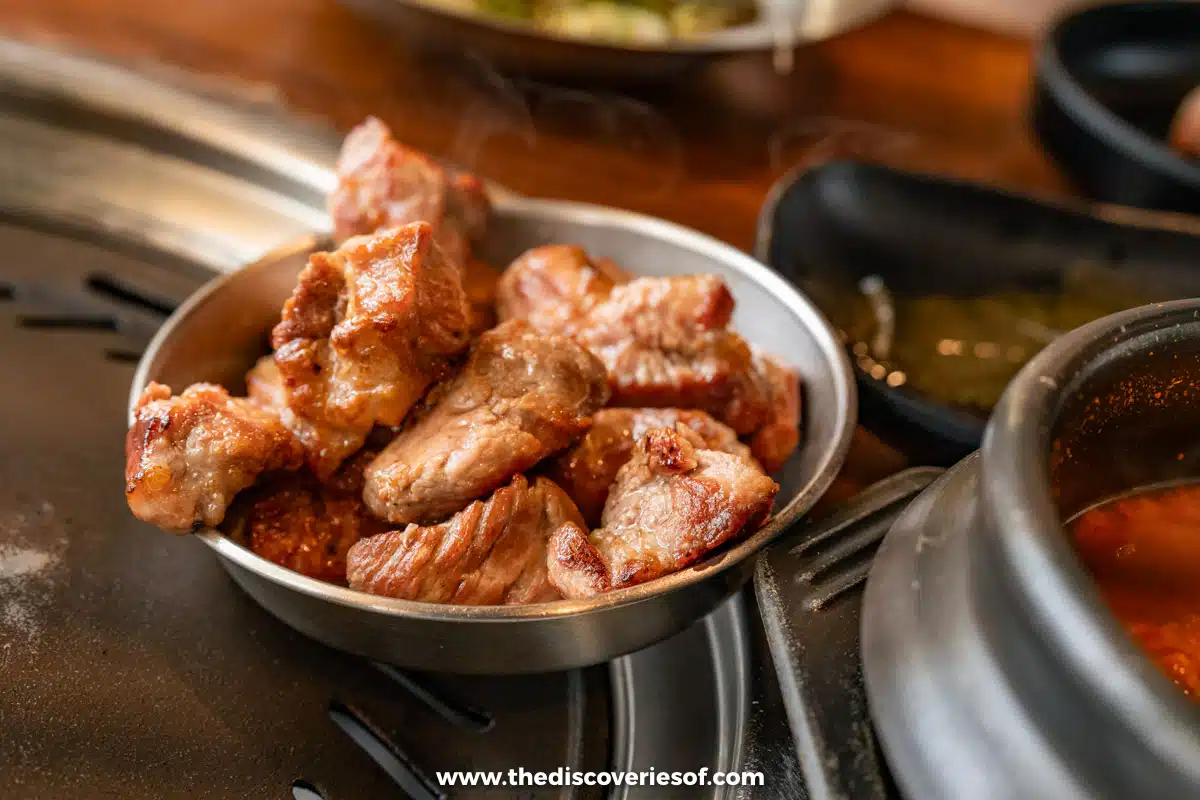
Visiting South Korea is a carnivore’s dream, with BBQ shops on just about every corner. Jeonju is no exception, and 경성금돼지 – Pork Grill Restaurant is the place to go.
Arrive hungry and enjoy endless cuts of succulent pork grilled right at your table and served with just the right amount of kimchi to balance out the richness of the savoury meat.
Hankook Jib
££
Conveniently located near the Royal Portrait Museum, this classic spot has served up the best bibimbap in Jeonju since 1952.
You’ll need to be ok with raw meat (it has beef tartare), but the savoury flavours from the Hwang Po Mook (yellow mung bean sauce) will keep you coming back for more.
PNB Hanok Village Point
£
There’s more than one location in Jeonju, but this is the most convenient and popular for sweet chocolate cakes. Try any of the many flavours, including green tea, strawberry, and the original chocolate.
Looking for a fun gift? They come in individual packages which make a great present when you return home.
Nadeulbul
£
This cosy restaurant is the closest thing you’ll find to eating in the kitchen of a local grandmother. The homey food is rich in flavour, and you’ll get a surprising amount of banchan with each order for lunch or dinner (seriously, like 15 small plates per order).
Service is warm and friendly, and the prices are right at this local gem. Order the Doenjang Jjigae (a flavourful crab stew) or the pork ribs and enjoy more banchan than can comfortably fit on your table.
Know Before You Go: Practical Tips to Plan Your Jeonju Trip
- Make time to do one of the most popular things to do in Jeonju – dress up in a traditional Korean hanbok dress and walk around the village.
- Festivals in Jeonju add even more excitement to an already charming city. Attend the International Film Festival in the Spring if you have time.
- Drop by Pottery Experience Center Object U, where you can make your own traditional Korean plateware and tea cups.
Typical Cost of Travelling?
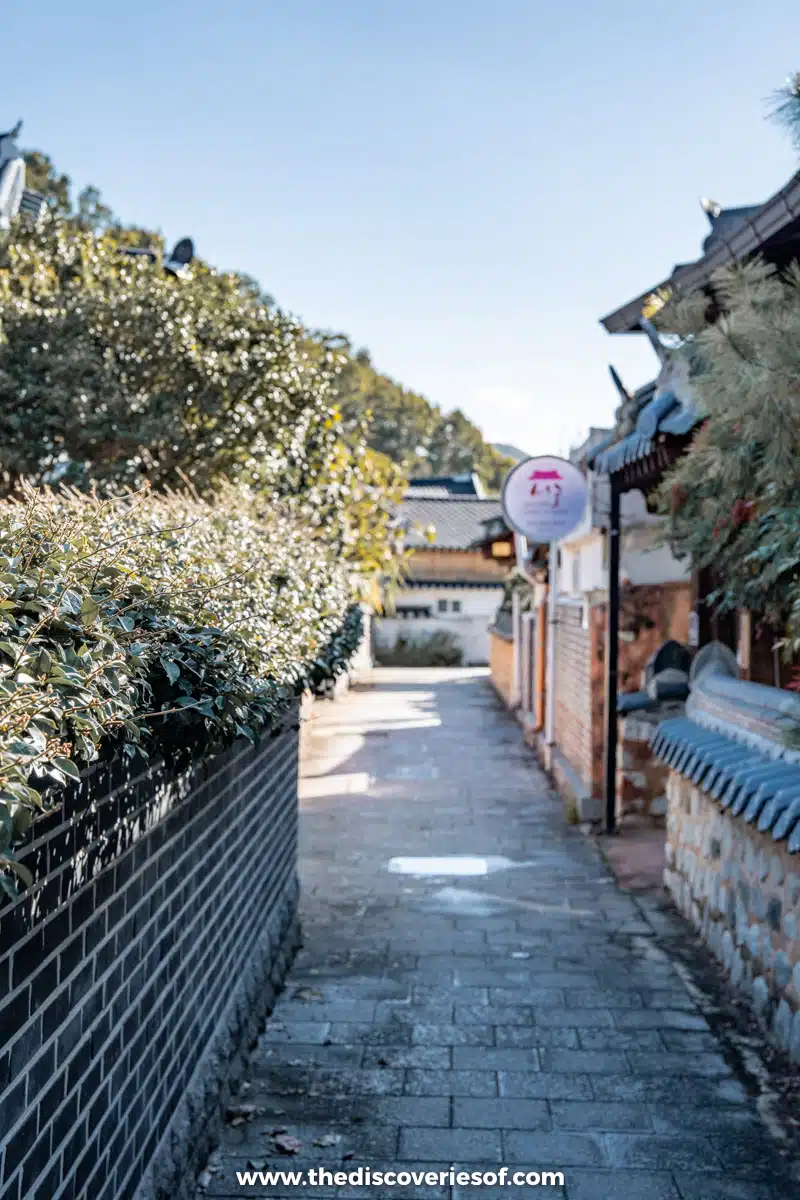
You can expect to pay around £100 ($125) per day when you visit Jeonju, including lodging, meals, and transportation.
How Long to Visit?
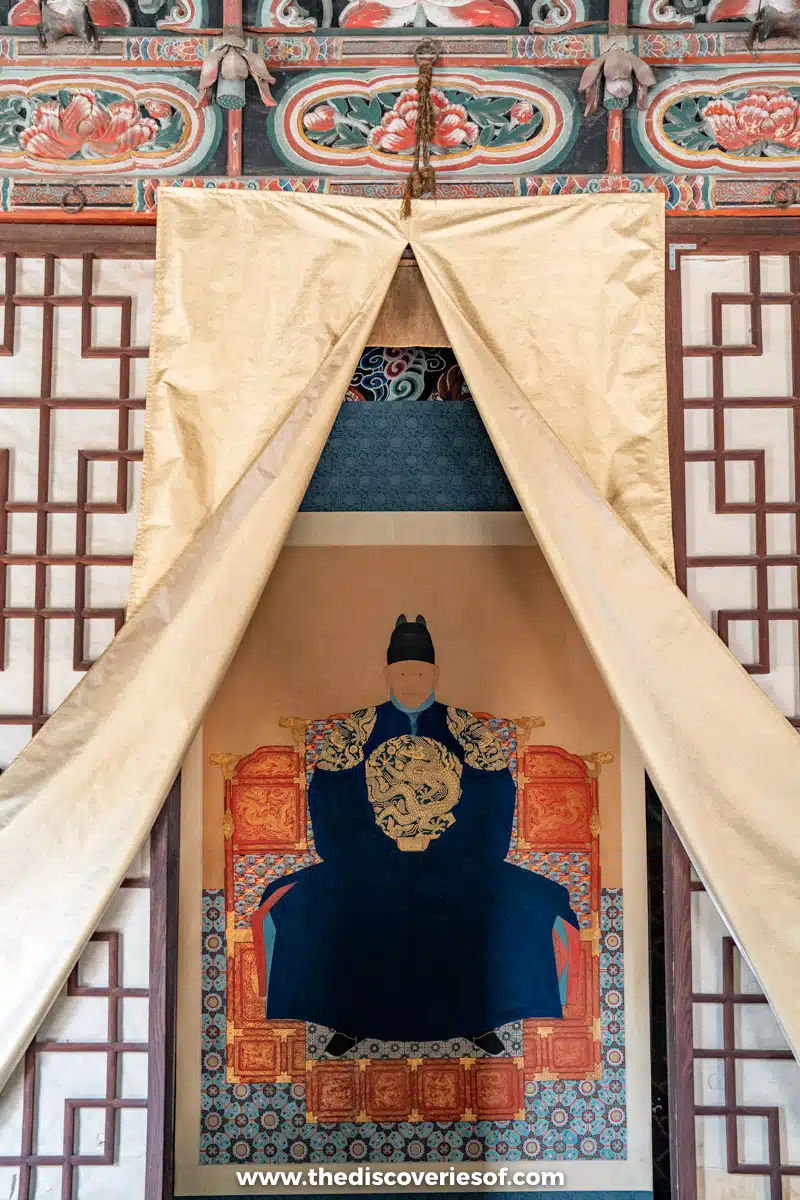
Many people stop by Jeonju on a day trip, but there are enough fun things to do in the city to extend your stay to a weekend or longer.
Best Time to Visit
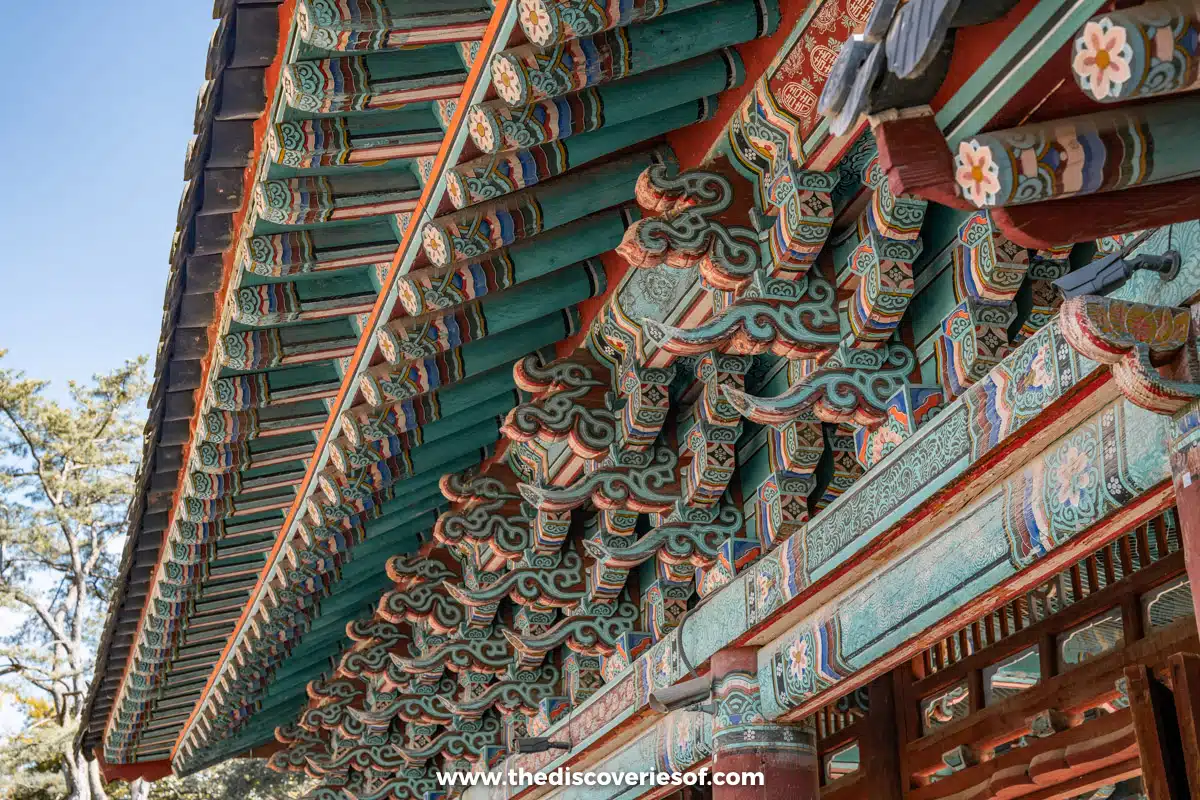
Fall is particularly charming when the ginkgo trees lining the cobbled streets change from green to yellow, especially in October.
Where to Stay
Most visitors come to Jeonju to see the Hanok Village and opt to choose a rental in the area around Pungnam-dong and Gyo-dong, which is adjacent to the village.
Happiness Full Hanok Guesthouse (Mid-Range)
Happiness Full Hanok Guesthouse offers traditional Hanok-style accommodations with private bathrooms and basic amenities like a refrigerator and AC.
Lahan Hotel Jeonju (High-End)
Lahan Hotel Jeonju is a stylish hotel in Pungnam-dong that features beautiful city views and spacious rooms with WiFi and a breakfast buffet that has a large spread with East Asian and Western cuisine.
How to Get There?
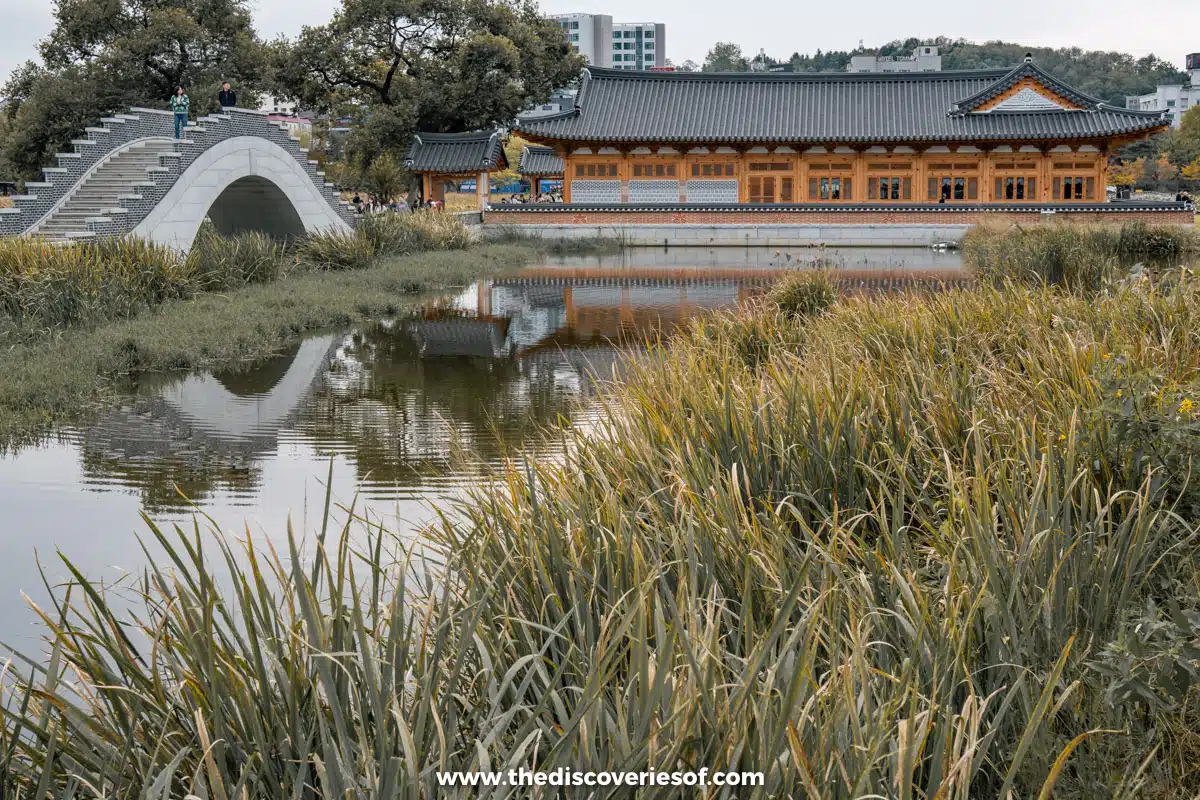
The best way to get to Jeonju from Seoul is to take the KTX. The ride takes around 3 hours, is quite comfy, and only costs around £28 ($35).
Suggested Itineraries
Day Trip to Jeonju Hanok Village
Jeonju Hanok Village – Gyeonggijeon Shrine – Jeondong Catholic Cathedral – Gyodong Tea Garden
Spend an afternoon sampling local tea in a hanok house and exploring a couple of the most popular attractions in the village.
Weekend Getaway
Jeonju Hanok Village – Omokdae and Imokdae Historic Sites – Moju Class – Deokjin Park – Jeonju Arboretum
Rent a hanbok and spend day 1 in the village and then head out to see a couple of the other top attractions in Jeonju on day 2.
Local Culture and Cuisine
Pungnam-dong – Gyo-dong – Hankook Jib – Hanok Village – Pottery Experience Center Object U – Jungang-dong Market – Jeonju Hanok Railbike – 경성금돼지 – Pork Grill Restaurant
Visit the Jungang-dong market, take a pottery class, and discover different neighbourhoods near Jeonju Hanok Village and throughout the city over 3-4 days.
Map
Read More Jeonju Travel Guides
- Visiting Jeonju’s Hanok Village: What You Need to Know
- 10 Days in South Korea – The Perfect South Korean Itinerary
- 22 Things to Do in South Korea
Love This? Save and Share on Pinterest!
